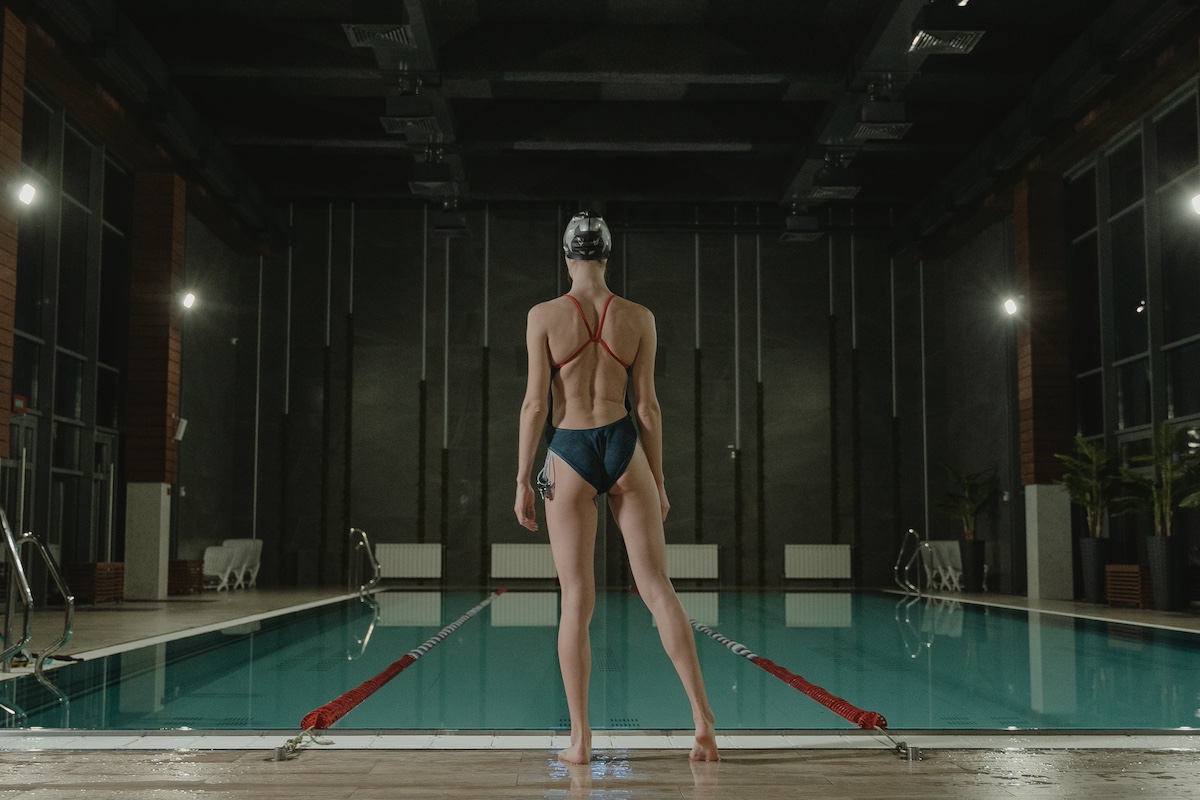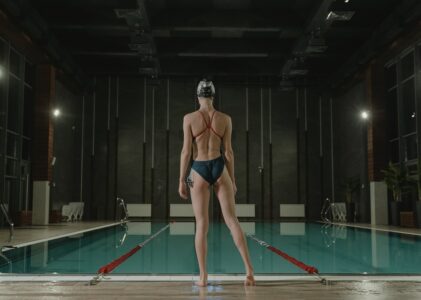When it comes to swimming, a proper warm-up is not just a luxury; it’s a necessity. An effective Swimmer warm-up program can make a significant difference in a swimmer’s performance, reducing the risk of injury, improving flexibility, and enhancing overall swimming efficiency. In this comprehensive guide, we will explore the key components of a successful warm-up routine for swimmers, backed by scientific evidence and expert insights. Whether you are a competitive athlete or a recreational swimmer, this guide will help you maximize your potential in the water.
Why Is Warm-Up Important for Swimmers?
Before diving into the details of an effective warm-up program, it’s crucial to understand why warming up is essential for swimmers. Warm-ups serve several critical purposes, including:
- Injury Prevention: Cold muscles and joints are more prone to injury. A proper warm-up increases blood flow to the muscles, making them more pliable and less susceptible to strains or tears.
- Improved Performance: Warming up helps swimmers prepare both physically and mentally for their training or competition. It can lead to better stroke technique, faster times, and improved endurance.
- Enhanced Flexibility: A warm-up routine that includes dynamic stretching can increase joint range of motion and muscle flexibility, enabling swimmers to move more efficiently through the water.
- Mental Focus: The warm-up period offers swimmers a chance to mentally prepare for their swim, focusing on their goals and strategy.
Now that we understand the importance of warming up, let’s delve into the components of an effective warm-up program for swimmers.
Key Components of a Swimmer’s Warm-Up Program
1. Cardiovascular Warm-Up
A swimmer’s warm-up typically begins with a cardiovascular component. This phase raises the heart rate and increases blood flow to the muscles. A cardiovascular warm-up can include activities such as jogging, jumping jacks, or light aerobic exercises. Here are some key points to consider:
- Duration: Aim for 5-10 minutes of cardiovascular activity to gradually elevate the heart rate.
- Intensity: Keep the intensity low to moderate during this phase to avoid fatigue before entering the water.
- Focus: The focus of the cardiovascular warm-up is to increase overall body temperature and circulation.
2. Dynamic Stretching
Dynamic stretching is an essential part of a swimmer’s warm-up routine. Unlike static stretching, which involves holding a stretch for an extended period, dynamic stretching uses controlled movements to improve flexibility and range of motion. Swimmers can perform dynamic stretches for various muscle groups, including the shoulders, hips, and legs. Some effective dynamic stretches for swimmers include arm circles, leg swings, and torso twists.
- Frequency: Perform each dynamic stretch for 10-15 repetitions.
- Range of Motion: Emphasize a full range of motion in each movement to prepare the muscles for the specific demands of swimming strokes.
3. Mobility Exercises
Mobility exercises focus on enhancing joint mobility and stability, which is crucial for swimmers to maintain proper form and technique in the water. These exercises can include shoulder rotations, hip circles, and ankle mobility drills. Pay special attention to areas that are prone to injury, such as the shoulders and knees.
- Repetition: Perform each mobility exercise for 10-15 repetitions on each side.
- Controlled Movement: Maintain control throughout the exercises to avoid overstretching or straining the joints.
4. Technique Drills
Technique drills are an integral part of the warm-up for competitive swimmers. These drills allow swimmers to focus on specific aspects of their stroke technique and reinforce proper form. Technique drills can vary depending on the stroke, but some common examples include single-arm drills, catch-up drills, and kickboard drills.
- Focus: Use this phase to concentrate on refining your stroke technique and body positioning.
- Variety: Incorporate different technique drills to address the weaknesses in your stroke.
5. Race-Pace Intervals
For competitive swimmers, adding race-pace intervals to the warm-up can be highly beneficial. These intervals simulate the intensity of the upcoming race or training session and help swimmers get mentally prepared for the task ahead. For example, a sprinter might perform short, high-intensity intervals at race pace, while a distance swimmer may include longer, controlled intervals.
- Intensity: Ensure that the intensity matches the demands of the upcoming swim.
- Visualization: During these intervals, visualize your race strategy and goals to enhance mental preparation.
6. Mental Preparation
The mental aspect of swimming should not be overlooked in the warm-up process. Take a few minutes to mentally prepare for your swim. Focus on your race strategy, visualize a successful swim, and build confidence in your abilities. Positive self-talk and relaxation techniques can also be beneficial during this phase.
- Visualization: Picture yourself executing each stroke flawlessly and reaching your desired goals.
- Affirmations: Use positive affirmations to boost your confidence and motivation.
Sample Warm-Up Routine for Swimmers
Now that we’ve covered the key components of a warm-up program for swimmers, here’s a sample routine that incorporates these elements:
Phase 1: Cardiovascular Warm-Up
- 5-10 minutes of light jogging or stationary cycling to increase heart rate and circulation.
Phase 2: Dynamic Stretching
- Arm circles: 2 sets of 15 repetitions in each direction.
- Leg swings: 2 sets of 15 repetitions for each leg.
- Torso twists: 2 sets of 15 repetitions for each side.
Phase 3: Mobility Exercises
- Shoulder rotations: 2 sets of 15 repetitions for each shoulder.
- Hip circles: 2 sets of 15 repetitions for each hip.
- Ankle mobility drills: 2 sets of 15 repetitions for each ankle.
Phase 4: Technique Drills
- Single-arm drills: 2 sets of 25 meters for each arm.
- Catch-up drills: 2 sets of 25 meters.
- Kickboard drills: 2 sets of 25 meters with a kickboard.
Phase 5: Race-Pace Intervals (for competitive swimmers)
- 4 x 25 meters at race pace with 30 seconds rest between intervals.
Phase 6: Mental Preparation
- Spend 2-3 minutes visualizing your race or swim, focusing on your strategy and goals.
- Repeat positive affirmations to boost confidence.
Tips for an Effective Warm-Up
To make the most of your warm-up program, consider the following tips:
- Individualize Your Warm-Up: Tailor your warm-up routine to your specific needs, taking into account your swimming goals and any injury concerns.
- Stay Consistent: Perform a thorough warm-up before every swim session, whether it’s practice or competition.
- Listen to Your Body: If you feel any discomfort or pain during the warm-up, modify or skip certain exercises to prevent injury.
- Stay Hydrated: Proper hydration is crucial for optimal muscle function. Ensure you are adequately hydrated before starting your warm-up.
- Include Dryland Warm-Up: When pool access is limited, incorporate dryland warm-up exercises to maintain your flexibility and conditioning.
- Warm-Up in a Controlled Environment: Choose a comfortable and controlled environment for your warm-up, especially in colder conditions.
Effective Swimmer Warm-up
An effective warm-up program is a vital component of a swimmer’s preparation for training or competition. It serves as a bridge between rest and peak performance, helping swimmers reduce the risk of injury, improve flexibility, and enhance overall swimming efficiency. By incorporating cardiovascular warm-up, dynamic stretching, mobility exercises, technique drills, race-pace intervals, and mental preparation into your routine, you can unlock your full potential in the water. Remember, a well-executed warm-up can make all the difference in your swimming journey.
Now, go hit the pool and experience the benefits of a well-structured warm-up program for yourself!
Additional Resources:
- USA Swimming Warm-Up and Cool Down Guidelines: Detailed guidelines for swimmers and coaches on effective warm-up and cool-down routines.
- Swimming World Magazine: A valuable source of information on swimming techniques, training, and competitions.
- The Science of Dynamic Stretching: An academic paper discussing the science behind dynamic stretching and its benefits for athletes.
- FINA – International Swimming Federation: The official website of FINA, the international governing body for swimming, diving, water polo, synchronized swimming, and open water swimming.

